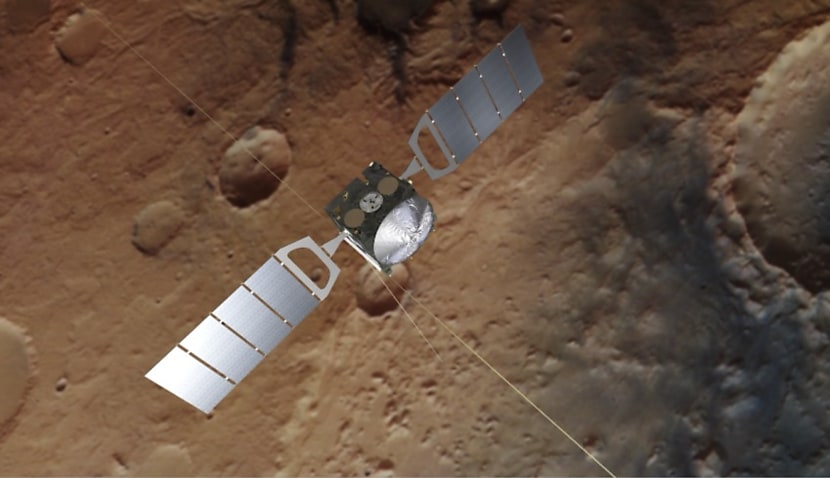
The team’s latest paper published in Icarus, a solar system studies journal, explains at length why the evidence from their original 2018 discovery is significantly more likely to be water.
This is the second time that the team, which included University of Southern Queensland’s Professor Graziella Caprarelli, has debunked a hypothesis that has attempted to cast doubt on their initial findings.
The original findings in 2018 stemmed from data collected by a radar instrument on board the European Space Agency’s Mars Express orbiter.
The team, led by Roberto Orosei from the Istituto Nazionale di Astrofisica in Italy, analysed the radar data and found evidence of subsurface lakes far beneath the ice cap situated at Mars’ south pole.
The radar from the Mars Express orbiter can penetrate both rock and ice, giving scientists an image of underground geological features on the planet. The properties of the radar signals change depending on the materials they bounce off when penetrating the ground.
The radar signals from the orbiter produced several unusually bright signals beneath the polar ice cap, which could signal the existence of liquid water far below the surface.
Since the 2018 discovery, doubts have been cast over whether the radar signals have in fact, detected liquid water.
“Several interpretations explaining the basal reflections have been proposed since bright radar reflections were detected in a region of Mars known as Ultimi Scopuli,” Professor Caprarelli said.
One such suggestion was that layers of clay rather than liquid water were the source of the bright radar signals. Three papers were published in 2021 that re-examined the original radar data and utilised experiments in a cold laboratory environment, concluding that clay was the culprit.
Orosei and Caprarelli’s team debunked this explanation in a paper released in February 2022, however.
“Just like our work published earlier this year in Earth and Planetary Science Letters – where we demonstrated that clays are not an alternative to water to explain the bright signals from the MARSIS radar – this latest paper demonstrates through simulations that layers of dry ice (CO2 ice) cannot produce the radar signals observed.”
Both articles are part of a series in which the team has attempted to explain how liquid water can exist beneath the surface of Mars, as well as addressing the doubts cast by alternative explanations.
“Both these papers reinforce and further corroborate our earlier interpretation that liquid water exists on the Red Planet,” said Caprarelli.

Liam McAneny
Liam McAneny is a journalist who has written and edited for his University International Relations journal. He graduated with a Bachelor of Arts (International Relations) and Bachelor of Laws from the University of Wollongong in 2021. He joined Momentum Media in 2022 and currently writes for SpaceConnect and Australian Aviation. Liam has a keen interest in geopolitics and international relations as well as astronomy.
Send Liam an email at: [email protected]
Receive the latest developments and updates on Australia’s space industry direct to your inbox. Subscribe today to Space Connect here.









